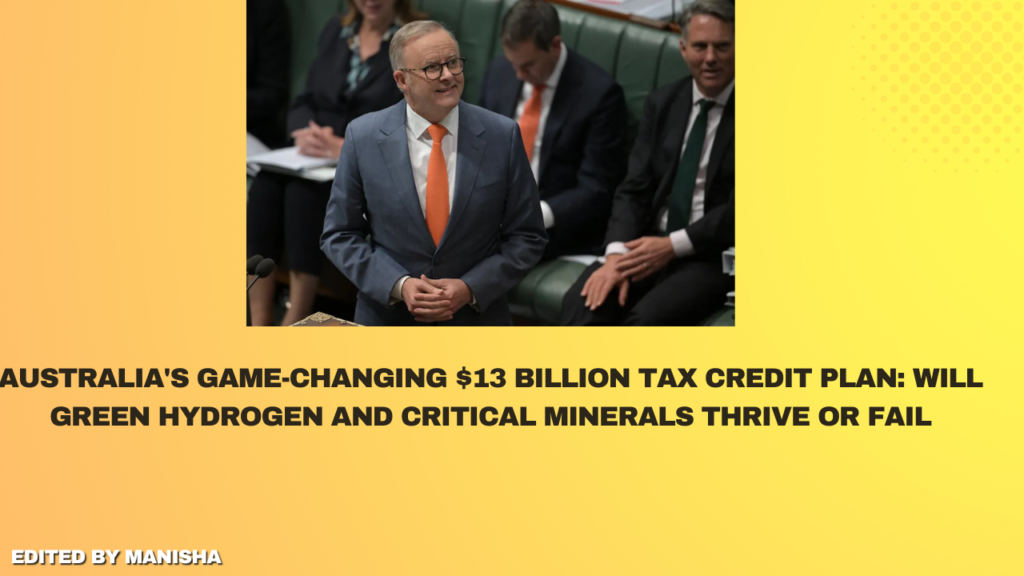
After months of debate, the federal government’s production tax credits for the green hydrogen and critical minerals sectors have been passed by Parliament. This was a significant element of the government’s recent budget, providing billions of dollars in support for both industries.
The structure of the support is somewhat unconventional. Unlike traditional grants or loans, which are given upfront, tax credits are issued only after the product is delivered. This approach reduces the risk of taxpayer funds being allocated to projects that may not come to fruition.
The policy has been politically contentious. The Coalition has criticized the green hydrogen sector’s support, claiming the industry remains largely speculative and may never become viable. In contrast, the government has rebuked the Coalition for opposing help for the critical minerals sector, noting that the industry had long called for such support. The government hopes this argument will resonate, particularly in the resource-heavy state of Western Australia.
Here’s a breakdown of how the production tax credits will operate:
Boost for Critical Minerals
Australia has been pushing for more domestic processing and refining of critical minerals, instead of simply extracting raw materials and sending them abroad for refinement. This is not only seen as an economic issue but also a security concern, given that China processes a majority of the world’s rare earth minerals.
Production tax credits aim to assist companies that refine 31 key minerals, such as nickel, lithium, cobalt, and manganese. These companies will be eligible for a tax credit covering 10% of their processing and refining costs, up to a certain purity level. This initiative has long been sought by various sectors within the resources industry. The Association of Mining and Exploration Companies described the bill’s passage as “monumental,” expecting it to stimulate billions in new investments.
This program is uncapped, with an estimated budget of $7 billion over the medium term. It will be available starting in mid-2027 and continue until the end of the next decade.
Coalition’s Opposition and Alternative Plans
When the tax credit plans were initially revealed in the budget, the Coalition quickly opposed them. Peter Dutton, the leader of the opposition, criticized the proposal, stating, “Fifteen billion for billionaires to dig minerals out of the ground.” The Coalition has maintained its stance, arguing that the government’s focus on tax credits ignores more fundamental issues affecting the sector, such as industrial relations challenges. WA Liberal Senator Dean Smith emphasized that while tax credits are appealing to businesses, they don’t address the core drivers of high project costs in the minerals processing industry.
The Nationals leader, David Littleproud, indicated that the Coalition is working on its own proposal to address what it sees as missed opportunities.
The Green Hydrogen Industry
Another major component of last year’s budget was the $6.7 billion allocated to the emerging green hydrogen sector. This initiative is designed to function similarly to the critical minerals support. For every kilogram of green hydrogen produced in Australia, a $2 tax credit can be claimed.
However, hopes for green hydrogen have recently dimmed. Despite its potential to decarbonize industries like steel production and to create green ammonia, the industry has faced setbacks. Australia’s largest green hydrogen project saw Origin Energy withdraw as its backer, and Fortescue also scaled back its ambitions. The Queensland government recently canceled support for a major hydrogen project in Gladstone.
Although no green hydrogen is currently being produced in Australia, the government remains committed to the sector, with the production tax credits seen as essential for keeping Australia competitive in the global market. Dr. Fiona Simon from the Australian Hydrogen Council has stated that these credits are necessary for Australia to stay “in the race” and maintain its role as a trusted energy partner in Asia.
The tax credits model means that if the green hydrogen sector fails to materialize, the $6.7 billion allocated to it will remain in taxpayers’ hands. The government views the production tax credits as crucial for realizing its vision of a “Future Made in Australia,” but those billions will only be disbursed once the industries begin to thrive.